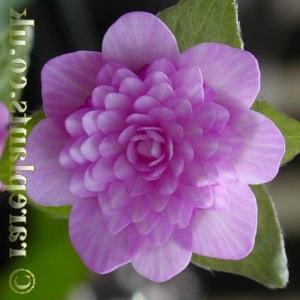Hepatica Orihime
(Hepatica Orihime)

Description
Hepatica (hepatica, liverleaf, or liverwort) is a genus of herbaceous perennials in the buttercup family, native to central and northern Europe, Asia and eastern North America. Some botanists include Hepatica within a wider interpretation of Anemone. Bisexual flowers with pink, purple, blue, or white sepals and three green bracts appear singly on hairy stems from late winter to spring. Butterflies, moths, bees, flies and beetles are known pollinators. The leaves are basal, leathery, and usually three-lobed, remaining over winter. Hepatica cultivation has been popular in Japan since the 18th century (mid-Edo period), where flowers with doubled petals and a range of colour patterns have been developed. Noted for its tolerance of alkaline limestone-derived soils, Hepatica may grow in a wide range of conditions; it can be found either in deeply shaded deciduous (especially beech) woodland and scrub or grassland in full sun. Hepatica will also grow in both sandy and clay-rich substrates, being associated with limestone. Moist soil and winter snowfall is a requirement; Hepatica is tolerant of winter snow cover, but less so of dry frost.
Taxonomic tree:







